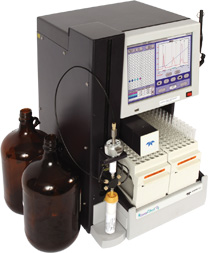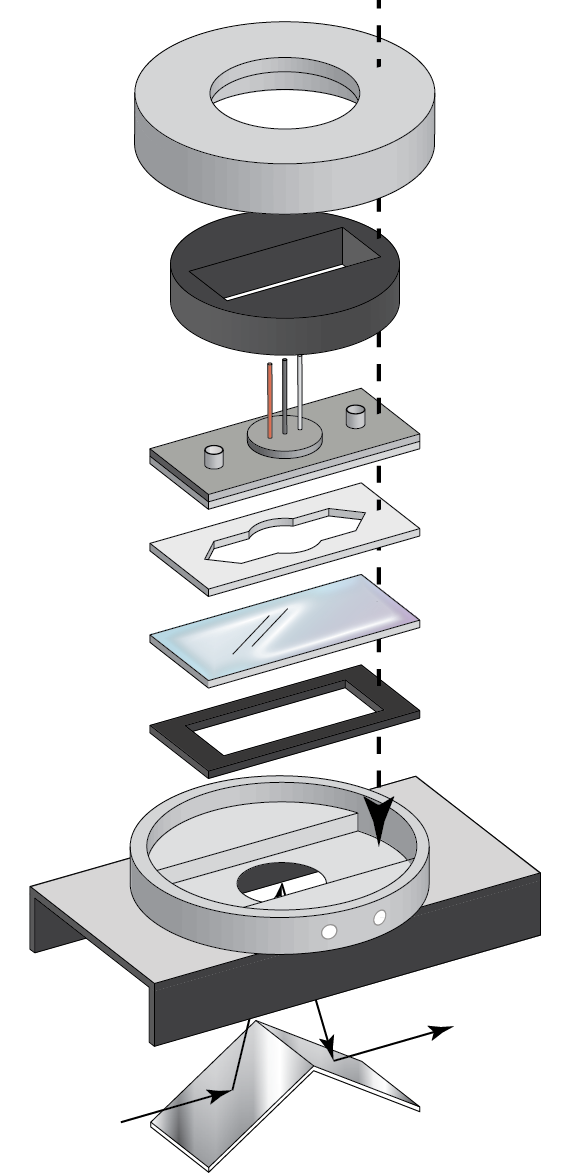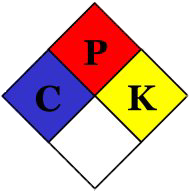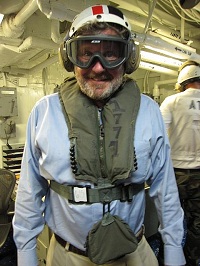Our solvent system dispenses dry, air-free acetonitrile, dichloromethane, diethyl ether, pentane, tetrahydrofuran, and toluene. It is capable of modular expansion to fill future needs.
Our solvent system dispenses dry, air-free acetonitrile, dichloromethane, diethyl ether, pentane, tetrahydrofuran, and toluene. It is capable of modular expansion to fill future needs.
We have three VAC glove boxes for air-sensitive work, including a completely dry and air-free double glove box, a more flexible single glovebox for air-free synthesis, and a box fitted for electrochemical experiments performed under an inert atmosphere.
In addition to our gloveboxes and solvent system, each of our hoods is equipped with a Schlenk line and vacuum pump. We also have two rotary evaporators and a wide variety of distillation glassware and columns, allowing a wide range of reaction workup and purification techniques.
A variety of potentiostats allow us to examine our electrocatalysts using a battery of electrochemical experiments, such as cyclic voltammetry, bulk electrolysis, and differential pulse voltammetry. In addition to these, our lab also has a custom-built Nuvant 25-channel potentiostat capable of running 25 small-scale electrochemical experiments at once. The system has two selectable current per channel ranges (1 μA-100 μA and 100 μA-10 mA per channel), with resolutions of 3100 μV and 500 nA.

Our Combiflash RF200 UV/Vis performs automatic preparative liquid chromatography. The combiflash can identify peaks of interest by UV spectrometry, and collect fractions accordingly.
The Lindberg/Blue M tube furnace allows for the uniform heating of materials up to 1000°C under inert environments, allowing for customization of electrodes and modification of surfaces.
Our ThermoScientific Nicolet 6700 FT-IR instrument allows for air-free IR, variable temperature IR, IR-spectroelectrochemistry, as well the traditional analysis of solid and solvated samples.
Our Shimadzu UV-3600 can spectroscopically analyse samples from the ultraviolet region to the near-IR (200-3000 cm-1).

We have two gas chromatography machines, the Agilent 5890 and the HP 6890. The former is optimized for detecting small organic molecules including alcohols, aldehydes, ketones, esters while the latter is optimized for detecting H2 and CO. Their primary use is in the measurement of evolved products from electrolysis and photoelectrolysis in the reduction of CO2 and in the oxidation of organic materials.

Infrared Spectroelectrochemistry (IR-SEC) allows us to combine electrochemistry with IR analysis. By examining characteristic bands in the IR, this allows us to examine how a molecule changes when it goes through different oxidation states.
This 8-channel automatic pipetter allows quick and accurate dispensing and mixing of chemicals, and is often used in conjunction with our 25-channel potentiostat.

We have access to a shared processor cluster for computational tasks. Our primary computational tool is ORCA, written by Franck Neese, which we employ primarily for density functional theory to predict the electronic structures and spectroscopic properties of compounds, including transition metal complexes. ORCA is used in the Kubiak lab to support and gain further understanding of experimental results.

Atomic Force Microscope (AFM) for the characterization of surfaces not amenable to examination under a scanning electron microscope (SEM). Conductivity and other properties of surfaces aside from topology can also be examined using AFM.
Departmental Facilities
The Chemistry and Biochemistry department houses a shared NMR facility with one 300 MHz instrument, two 400 MHz instruments, and two 500 MHz NMR instruments. Accounts are granted after hands-on training sessions, and scheduling is performed through an online system.
NMR Facility Website
The department single-crystal X-ray crystallography facility houses four diffractometers for general use. We have two instruments with copper x-ray sources, and two with molybdenum x-ray sources, including an extremely powerful and versatile rotating anode instrument.
XRD Facility Website
The Chemistry and Biochemistry Department houses a molecular mass spectrometry facility that serves the campus. A variety of samples can be run including organic and organometallic compounds, both through standard ESI walkup instruments and sample submission for more advanced techniques.
Mass Spec Facility Website
External UCSD Facilities
The NMR bubble houses three instruments - 500 MHz, 600 MHz, and an 800 MHz NMR.
NMR Bubble Website
The electron microscopy facility hosts two 120 kV TEMs.
Electron Microscopy Facility Website
The Nano3 facility provides an extensive list of tools for fabrication and characterization of materials, including a state-of-the-art cleanroom facility. Popularly used tools in this facility by our lab include: Scanning electron microscope (SEM) – The facility own two SEMs, one environmental, and one high-resolution system for characterizing conductive samples. Denton Discovery 18 Sputter System – The sputtering system allows for fast deposition of both metal and oxides onto planar surfaces. Temescal BJD 1800 Electron Beam Evaporator – The facility owns two separate evaporators, both used for the slow conformal coating of metals onto surfaces. More information on other instruments, usage rules, and contacts can be found at the facility's website.
Nano3 Facility Website


